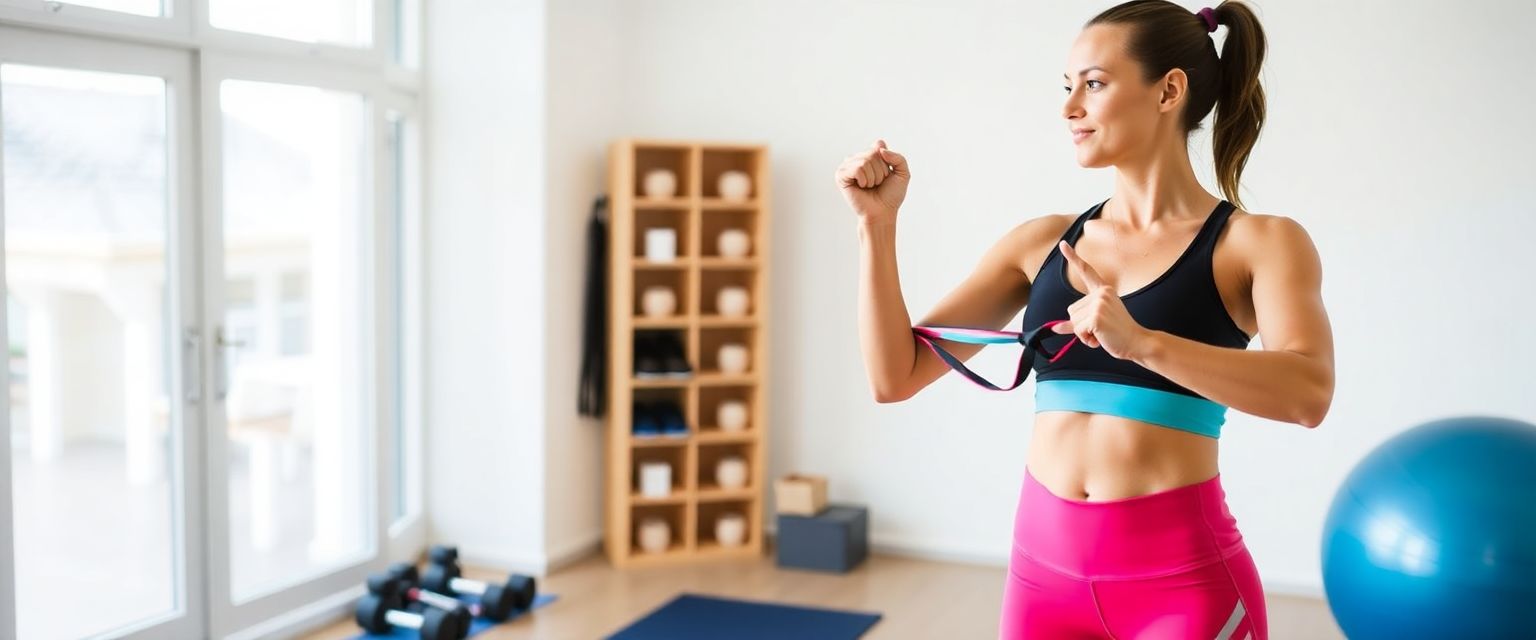Living with Polycystic Ovary Syndrome (PCOS) can make fat loss feel like an uphill battle. But with the right exercise equipment and a solid workout plan, you can effectively manage your PCOS symptoms and shed those stubborn pounds, all from the comfort of your home.
I’ve compiled a comprehensive list of the most effective exercise equipment specifically tailored for women with PCOS, focusing on items that target insulin resistance, hormonal balance, and overall metabolic health.
Understanding PCOS and Exercise
PCOS is often associated with insulin resistance, which can make fat loss more challenging. Regular exercise helps improve insulin sensitivity, balance hormones, and boost metabolism – all key factors in managing PCOS symptoms and promoting fat loss.
The ideal exercise routine for PCOS should include a mix of cardio and strength training. Cardio helps burn calories and improve cardiovascular health, while strength training builds lean muscle mass, which in turn boosts metabolism and helps regulate insulin levels.
Top Exercise Equipment for PCOS Weight Loss
1. Resistance Bands
Resistance bands are a versatile and affordable piece of equipment that can provide a full-body workout. They’re especially useful for women with PCOS because they allow for progressive resistance training, which is crucial for building lean muscle mass and improving insulin sensitivity.
Resistance bands come in various levels of tension, allowing you to adjust the difficulty of your workouts as you get stronger. They’re also incredibly portable, making them perfect for travel or small living spaces.
When using resistance bands, focus on compound exercises that work many muscle groups simultaneously. This approach maximizes calorie burn and helps improve overall body composition.
Some effective exercises include squats with overhead presses, rows, and lunges with bicep curls.
Pro Tip: Look for a set of bands with varying resistance levels to accommodate different exercises and to progress as you get stronger. Start with lighter resistance and gradually increase as you build strength and confidence.
Recommended Product: WALITO Resistance Bands
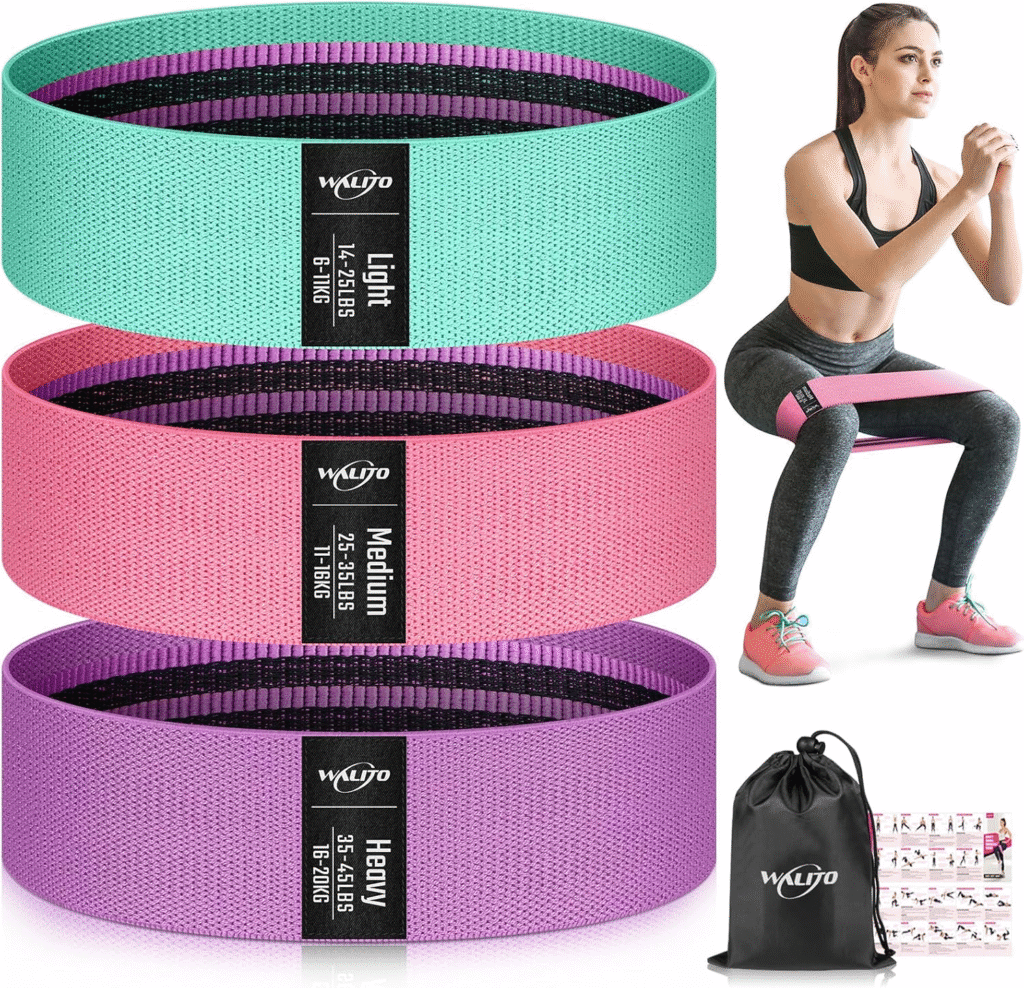
2. Kettlebells
Kettlebells are excellent for combining strength training with cardio, making them perfect for PCOS fat loss. The dynamic movements involved in kettlebell exercises, such as swings and Turkish get-ups, engage many muscle groups simultaneously, leading to increased calorie burn and improved metabolic health.
Kettlebell training also helps improve grip strength and core stability, which are useful for overall fitness and daily activities. The ballistic nature of many kettlebell exercises can help boost your heart rate quickly, providing an excellent cardiovascular workout in a short amount of time.
When starting with kettlebells, focus on mastering basic movements like the kettlebell swing, goblet squat, and single-arm row. These exercises form the foundation for more advanced kettlebell workouts and provide a full-body workout that targets key areas affected by PCOS.
Key Insight: Start with a lighter kettlebell (around 8-12 pounds) and focus on proper form before progressing to heavier weights. Proper technique is crucial for preventing injuries and maximizing the benefits of kettlebell training.
Recommended Product: Yes4All 5-100 LB Kettlebells
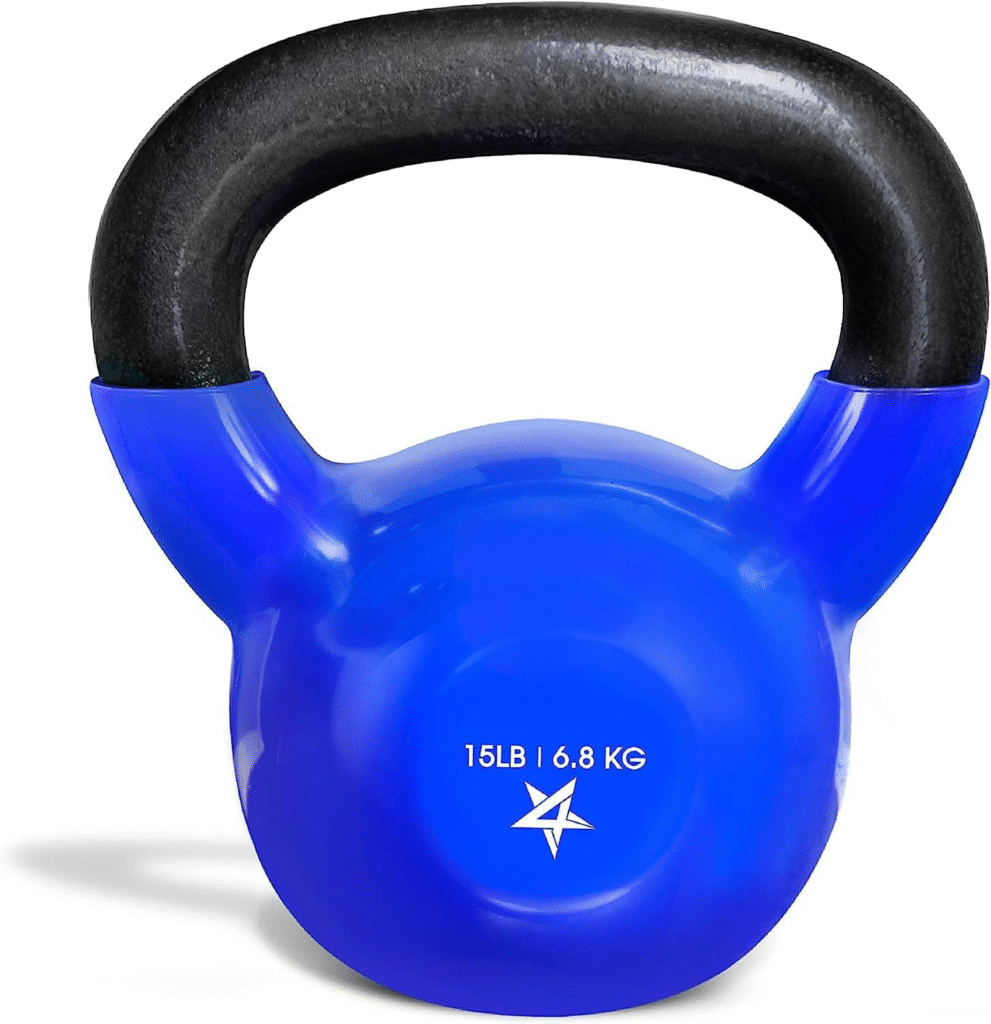
3. Stationary Bike
For low-impact cardio that’s easy on the joints but effective for fat loss, a stationary bike is hard to beat. Cycling can help improve insulin sensitivity and cardiovascular health without putting excessive stress on your body.
Plus, you can easily adjust the intensity to suit your fitness level.
Stationary bikes offer the flexibility to perform both steady-state cardio and high-intensity interval training (HIIT). Steady-state cardio is great for building endurance and burning calories over longer periods, while HIIT can help boost metabolism and improve insulin sensitivity in shorter, more intense sessions.
To get the most out of your stationary bike workouts, try incorporating a mix of both steady-state and interval training. For example, you could do a 30-minute steady ride three times a week, and two 20-minute HIIT sessions where you alternate between 30 seconds of high-intensity pedaling and 30 seconds of recovery.
Pro Tip: If space is a concern, consider a folding stationary bike that can be easily stored when not in use. Look for models with adjustable resistance levels and comfortable seating to confirm you can maintain proper form during longer rides.
Recommended Product: MERACH Folding Exercise Bike, Foldable Stationary Bikes for Home

4. Yoga Mat and Props
Yoga is an excellent form of exercise for women with PCOS, as it helps reduce stress (which can exacerbate PCOS symptoms), improves flexibility, and can even help balance hormones. A good-quality yoga mat, along with props like blocks and straps, can help you get the most out of your yoga practice at home.
Certain yoga poses are particularly useful for PCOS management. Inversions like shoulder stands and legs-up-the-wall pose can help improve circulation and reduce inflammation.
Twisting poses can massage the internal organs and potentially help with hormone regulation.
Restorative poses like child’s pose and savasana can help reduce stress and cortisol levels, which is crucial for managing PCOS symptoms.
When choosing a yoga mat, look for one with good grip and cushioning to support your joints during practice. Yoga blocks can help you maintain proper alignment in poses, while straps can assist in deepening stretches safely.
Pro Tip: Look for online yoga classes specifically designed for women with PCOS to get started. These classes often focus on poses and sequences that are particularly useful for managing PCOS symptoms.
Recommended Product: Foldable Yoga Exercise Mat
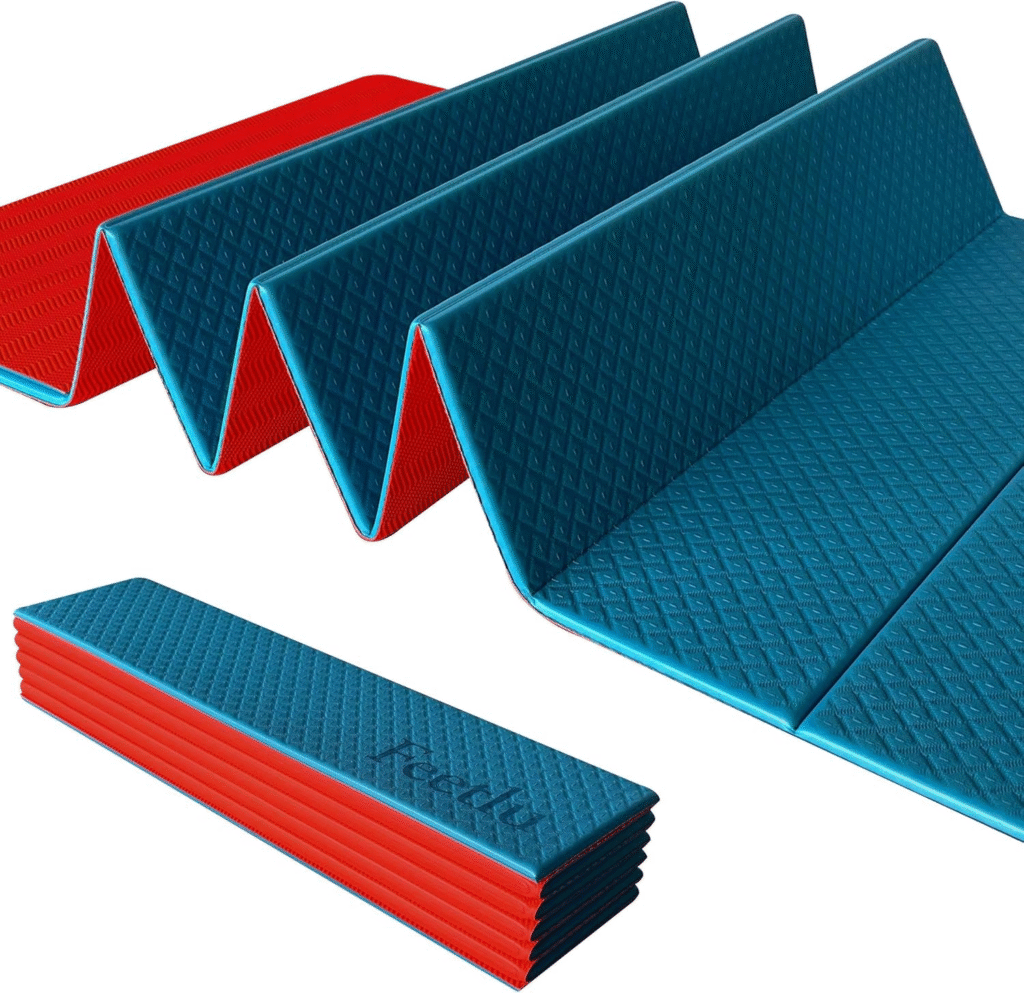
5. Adjustable Dumbbells
Strength training is crucial for PCOS management, and a set of adjustable dumbbells allows you to perform a wide range of exercises without taking up too much space. As you progress, you can easily increase the weight to continue challenging your muscles and improving your metabolic health.
Adjustable dumbbells are particularly useful for progressive overload, a key principle in strength training where you gradually increase the weight, frequency, or number of repetitions in your strength training routine. This continual challenge to your muscles is essential for building lean muscle mass, which in turn helps boost metabolism and improve insulin sensitivity.
Some effective dumbbell exercises for PCOS management include squats, lunges, deadlifts, rows, and shoulder presses. These compound movements work many muscle groups simultaneously, maximizing calorie burn and hormonal benefits.
Key Insight: When starting with dumbbells, focus on proper form rather than lifting heavy weights. Begin with lighter weights and higher repetitions to build endurance and perfect your technique before progressing to heavier loads.
Recommended Product: AOTOB 25/55 lbs Dumbbell Set
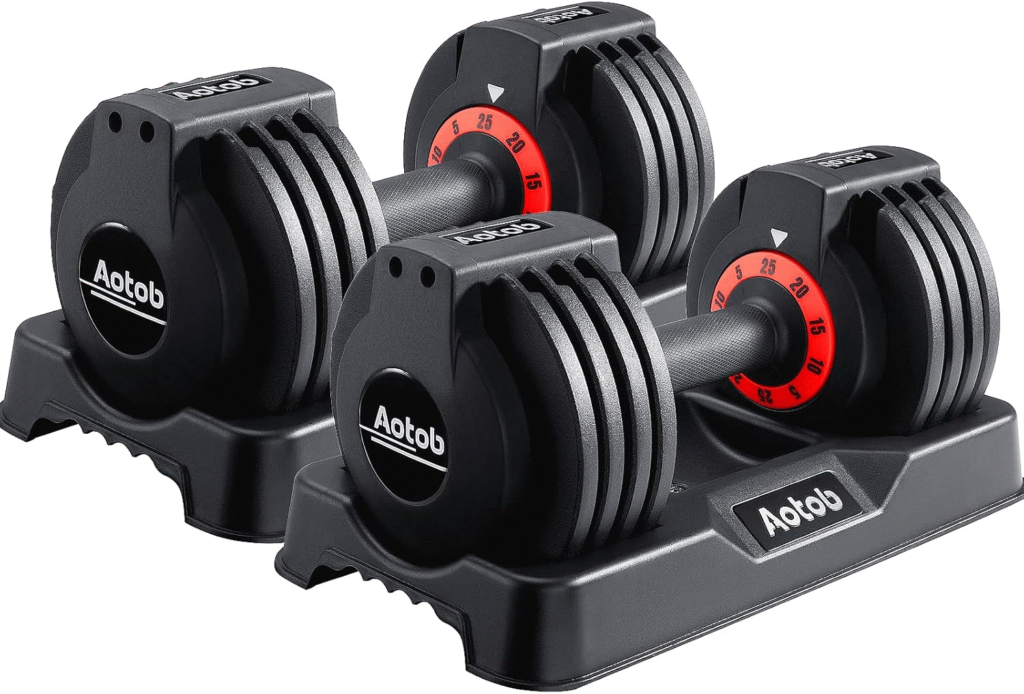
6. Jump Rope
Don’t underestimate the power of a simple jump rope. Jumping rope is an excellent cardio exercise that can help improve insulin sensitivity and burn calories.
It’s also a great way to add some high-intensity interval training (HIIT) to your routine, which has been shown to be particularly effective for PCOS fat loss.
Jumping rope is a high-impact activity that can help improve bone density, which is important for women with PCOS who may be at higher risk for osteoporosis. It also improves coordination, agility, and foot speed, which can benefit overall fitness and daily activities.
To incorporate jump rope into your PCOS workout routine, try starting with short bursts of jumping (30 seconds to 1 minute) interspersed with rest periods. As your endurance improves, you can increase the duration of your jumping intervals and decrease rest times.
Key Insight: If you’re new to jumping rope or have joint issues, start with a weighted rope that rotates more slowly, making it easier to time your jumps. Also, make sure to jump on a shock-absorbing surface like a rubber mat to reduce impact on your joints.
Recommended Product: Redify Weighted Jump Rope
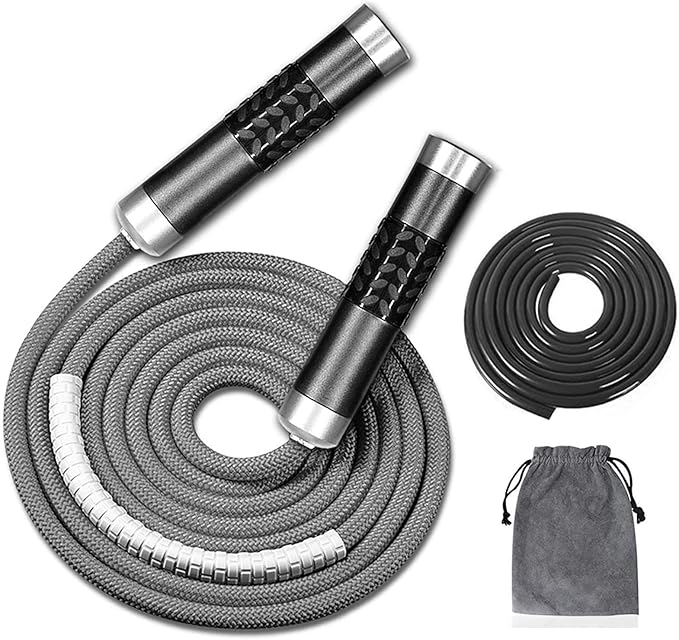
7. Stability Ball
A stability ball (also known as an exercise ball or Swiss ball) is a versatile piece of equipment that can be used for core strengthening, balance training, and even as a replacement for a bench in some strength training exercises. Strong core muscles are essential for overall fitness and can help reduce some PCOS symptoms.
Stability balls are particularly effective for engaging the deep core muscles, which are crucial for posture, balance, and overall strength. Exercises like stability ball crunches, planks with feet on the ball, and wall squats with the ball behind your back can provide an extra challenge to your core and lower body.
For women with PCOS, incorporating stability ball exercises into your routine can help improve insulin sensitivity by engaging large muscle groups and promoting overall muscle activation. The instability created by the ball also forces your body to work harder to maintain balance, increasing the overall intensity of your workouts.
Pro Tip: When choosing a stability ball, make sure to choose the suitable size for your height. When seated on the ball, your thighs should be parallel to the ground or at a slight downward angle.
Recommended Product: TRX Training Stability Ball
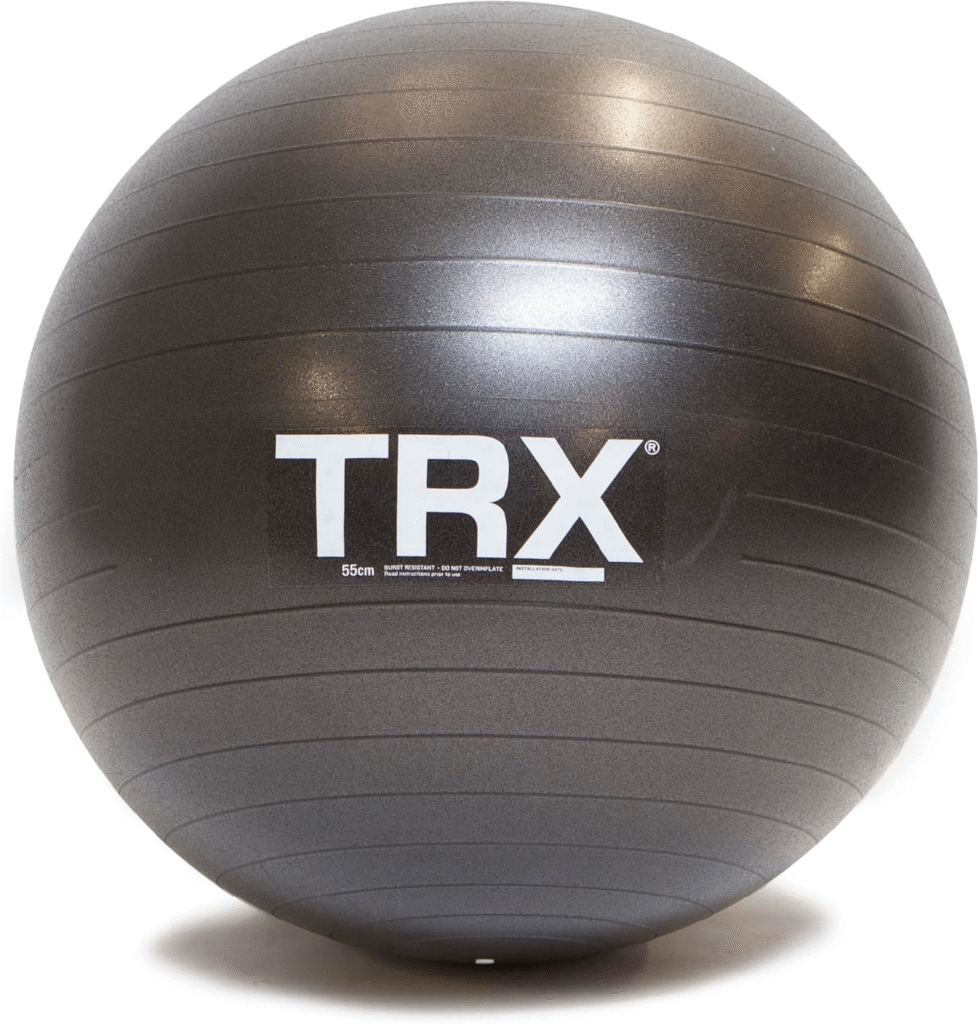
8. Foam Roller
While not strictly for exercise, a foam roller is an invaluable tool for recovery and maintaining flexibility. Regular foam rolling can help reduce muscle soreness, improve circulation, and keep you flexible enough to perform exercises with proper form – all of which contribute to more effective workouts and better PCOS management.
Foam rolling, also known as self-myofascial release, can help break up adhesions in the fascia (the connective tissue surrounding muscles), which can improve muscle function and reduce pain. This is particularly useful for women with PCOS who may experience inflammation or muscle tension because of hormonal imbalances.
Some key areas to focus on when foam rolling include the quadriceps, hamstrings, calves, and upper back. Spend about 30-60 seconds on each muscle group, rolling slowly and pausing on any particularly tight or tender spots.
Key Insight: Start with a softer foam roller if you’re new to the practice, as firmer rollers can be quite intense. As you become more comfortable with the technique, you can progress to firmer rollers for deeper tissue work.
Recommended Product: Yes4All High-Density Round Back Roller Foam
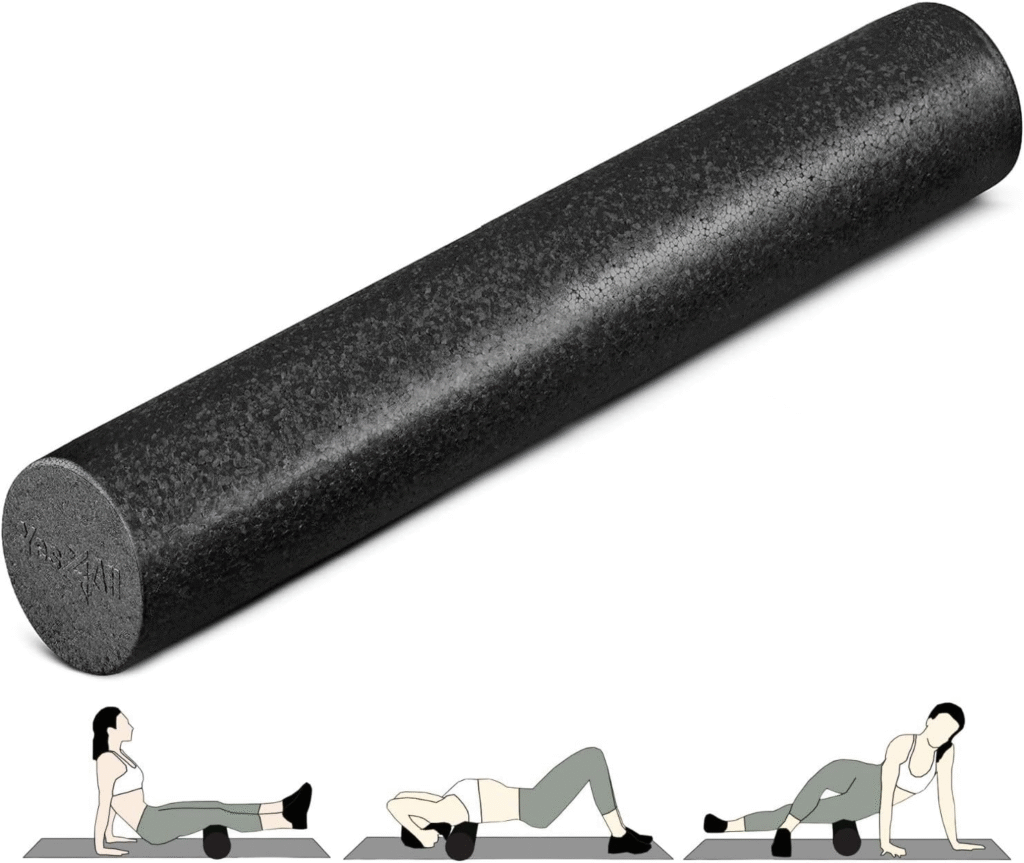
9. Suspension Trainer
Suspension trainers, like the TRX system, allow for a full-body workout using just your body weight and gravity. This type of training is excellent for building functional strength and improving core stability.
The ability to adjust the difficulty by changing your body position makes it suitable for all fitness levels.
Suspension training is particularly useful for women with PCOS because it engages many muscle groups simultaneously, leading to increased calorie burn and improved metabolic health. The instability created by the suspension straps also forces your core to work harder, promoting better overall stability and posture.
Some effective suspension trainer exercises for PCOS management include rows, chest presses, squats, lunges, and planks. These exercises can be easily modified to suit your fitness level by adjusting your body position relative to the anchor point of the straps.
Pro Tip: Start with basic exercises and focus on maintaining proper form before progressing to more advanced movements. Always confirm the suspension trainer is securely anchored before beginning your workout.
Recommended Product: TRX GO Suspension Trainer System
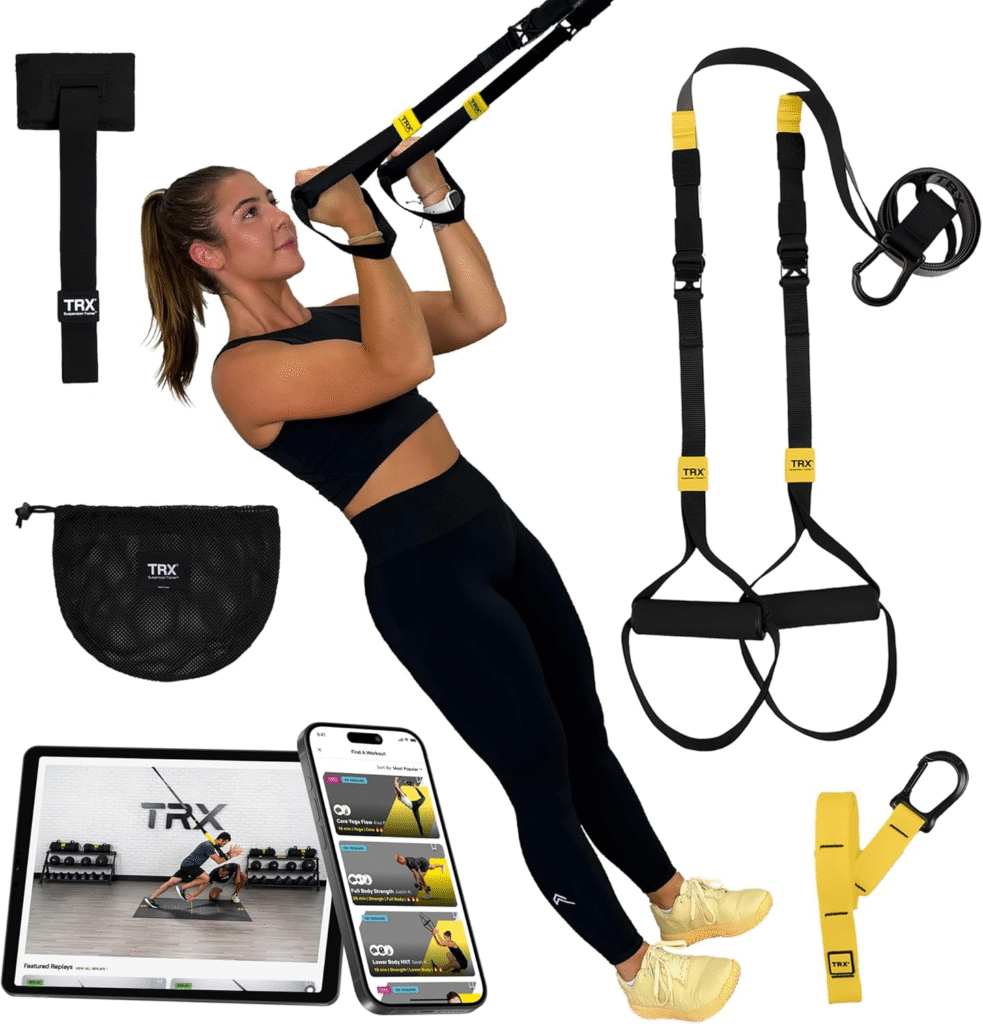
10. Mini Trampoline (Rebounder)
Rebounding on a mini trampoline is a fun and effective way to get your cardio in while also supporting lymphatic health. The gentle bouncing motion can help improve circulation, boost metabolism, and even help balance hormones – all useful for women with PCOS.
Rebounding is a low-impact exercise that provides many of the benefits of running or jumping without the harsh impact on your joints. This makes it an excellent option for women with PCOS who may be carrying extra weight or have joint sensitivities.
The rhythmic bouncing motion of rebounding helps stimulate the lymphatic system, which plays a crucial role in removing toxins and waste from the body. This can be particularly useful for women with PCOS, who may experience inflammation and hormonal imbalances.
To incorporate rebounding into your PCOS workout routine, start with short sessions of 5-10 minutes and gradually increase the duration as your fitness improves. You can perform simple bounces, jogging in place, or even add arm movements for a full-body workout.
Key Insight: Look for a mini trampoline with a sturdy frame and good spring tension to confirm safety and effectiveness. Some models come with a stability bar, which can be helpful for beginners or those with balance concerns.
Recommended Product: Mini Fitness Trampoline with Bungees
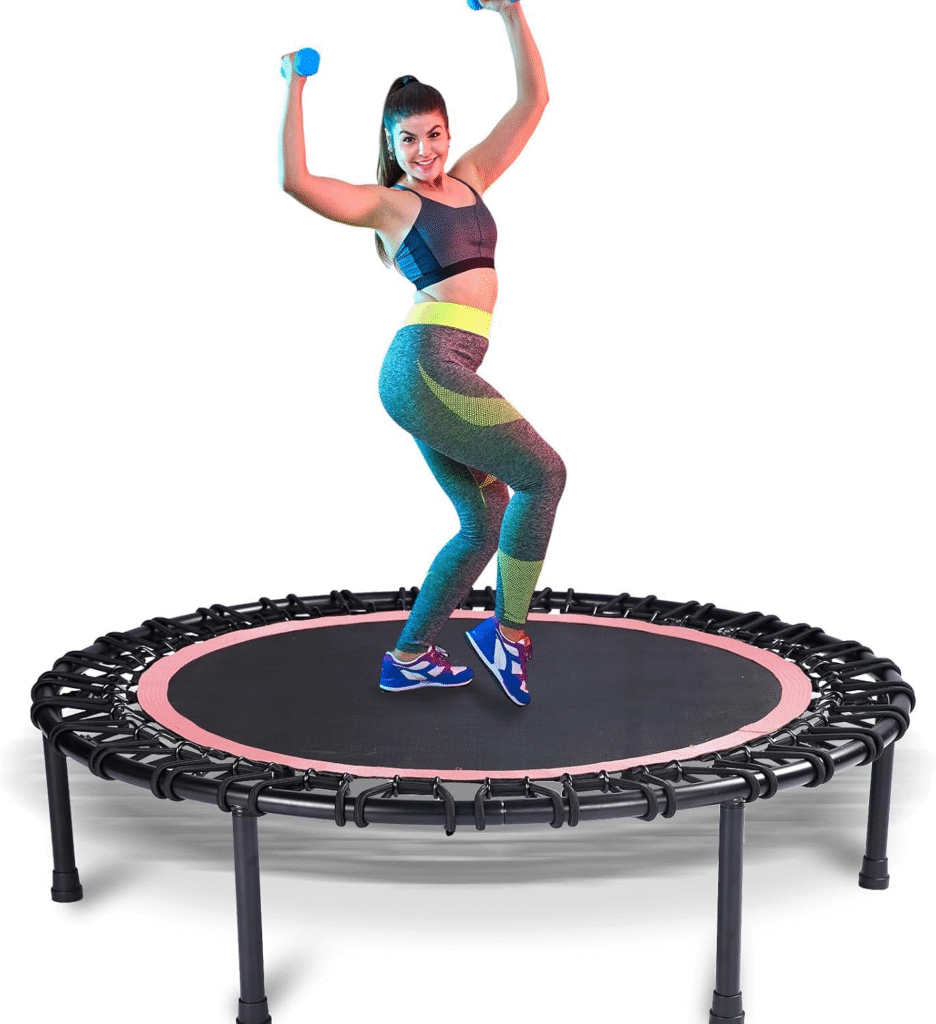
Creating Your PCOS-Friendly Home Gym
When setting up your home gym for PCOS fat loss, remember that you don’t need to buy everything at once. Start with a few key pieces that allow you to do both cardio and strength training.
As you progress, you can add more equipment to keep your workouts varied and challenging.
Here’s a sample starter kit:
- Resistance bands
- A set of adjustable dumbbells
- A yoga mat
- A jump rope
With just these four items, you can create a wide variety of workouts that target all aspects of fitness important for PCOS management.
As you become more comfortable with your routine and identify your preferences, you can gradually add more equipment. For example, you might decide to invest in a stationary bike for low-impact cardio or a suspension trainer for more advanced bodyweight exercises.
Remember to also consider your available space when choosing equipment. Opt for versatile, space-saving options if you’re working with a small area.
Many of the items on this list, like resistance bands and jump ropes, are easily stored and don’t need much room to use.
Maximizing Your Workouts for PCOS
The most effective workout routine for PCOS combines strength training, cardio, and stress-reducing activities like yoga or Pilates. Aim for at least 150 minutes of moderate-intensity exercise or 75 minutes of vigorous-intensity exercise per week, spread out over several days.
Here’s a sample weekly workout plan using the equipment we’ve discussed:
Monday: 30 minutes of strength training with resistance bands and dumbbells
Tuesday: 20 minutes of HIIT on the mini trampoline or with a jump rope
Wednesday: 30 minutes of yoga
Thursday: 30 minutes of cycling on a stationary bike
Friday: 30 minutes of full-body workout using a suspension trainer
Saturday: 20 minutes of kettlebell exercises
Sunday: Rest or gentle stretching with foam roller
Remember to always listen to your body and adjust the intensity or duration of your workouts as needed. It’s also important to mix your exercise routine with a balanced, PCOS-friendly diet for optimal results.
Key Takeaways:
- Focus on a combination of strength training and cardio for optimal PCOS management
- Choose equipment that allows for progressive overload to continually challenge your body
- Incorporate stress-reducing activities like yoga to help balance hormones
- Start slowly and gradually increase intensity to avoid burnout or injury
- Consistency is key – regular exercise is more important than intense but infrequent workouts
People Also Asked
What is the best exercise for PCOS fat loss?
A combination of strength training and cardio is most effective for PCOS fat loss. High-Intensity Interval Training (HIIT) and resistance training are particularly useful as they help improve insulin sensitivity and boost metabolism.
How often should I exercise with PCOS?
Aim for at least 150 minutes of moderate-intensity exercise or 75 minutes of vigorous-intensity exercise per week, spread across 3-5 days. Consistency is key for managing PCOS symptoms and promoting fat loss.
Can yoga help with PCOS symptoms?
Yes, yoga can be useful for PCOS. It helps reduce stress, improve flexibility, and may help balance hormones.
Certain poses like inversions and twists are particularly helpful for PCOS management.
Are resistance bands effective for PCOS fat loss?
Resistance bands are highly effective for PCOS fat loss. They allow for progressive resistance training, which helps build lean muscle mass and improve insulin sensitivity – both crucial for managing PCOS symptoms.
What type of cardio is best for PCOS?
Low-impact cardio like cycling on a stationary bike or using an elliptical machine is excellent for PCOS. High-Intensity Interval Training (HIIT) can also be very effective, as it helps improve insulin sensitivity and boost metabolism.
How does strength training help with PCOS?
Strength training helps build lean muscle mass, which increases metabolism and improves insulin sensitivity. This can help manage PCOS symptoms and promote fat loss.
Is jumping rope good for PCOS?
Jumping rope can be an excellent cardio exercise for PCOS. It helps improve insulin sensitivity, burn calories, and can be used for high-intensity interval training, which is particularly useful for PCOS management.
Can kettlebell exercises help with PCOS?
Kettlebell exercises are great for PCOS as they mix strength training and cardio. They engage many muscle groups simultaneously, leading to increased calorie burn and improved metabolic health.
How does foam rolling benefit women with PCOS?
Foam rolling can help reduce muscle soreness, improve circulation, and maintain flexibility. For women with PCOS, who may experience inflammation or muscle tension because of hormonal imbalances, foam rolling can be particularly useful.
What’s the benefit of using a stability ball for PCOS?
Stability balls help strengthen core muscles, improve balance, and can intensify many strength training exercises. For women with PCOS, this can lead to improved overall fitness and potentially help manage symptoms by engaging large muscle groups and promoting overall muscle activation.
Disclaimer
The information contained in this post is for general information purposes only. The information is provided by Top Exercise Equipment for PCOS Weight Loss: Effective Home Workouts and while we endeavor to keep the information up to date and correct, we make no representations or warranties of any kind, express or implied, about the completeness, accuracy, reliability, suitability or availability with respect to the website or the information, products, services, or related graphics contained on the post for any purpose.


